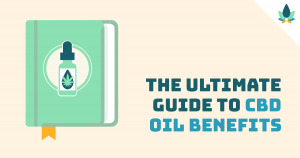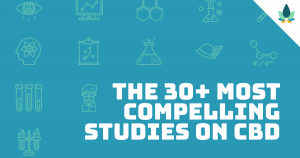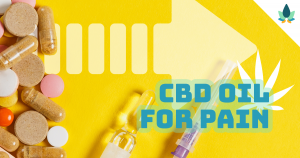Chronic pain is a way of life for far too many people. CBD has begun to shine as an alternative to traditional chronic pain treatments.
If you’re here, you’re searching for answers. You’re frustrated. You (or a loved one) have been experiencing pain that alters your daily life, changes the way you’re able to interact and may prevent you from taking part in activities you enjoy. You know there has to be a better way and perhaps CBD oil has entered the conversation a time or two.
As you read on, you’ll learn that you’re not alone.
CBD has become an integral part of chronic pain treatment regimens for sufferers facing a variety of chronic pain-related conditions.
In this piece, you’ll find answers, learn more about what CBD oil is, how it helps the body fight pain and its anti-inflammatory properties, and why it might be a worthwhile option for you to consider.
We’ll also cover how CBD differs from medical marijuana — another alternate option for treating pain — side effects to consider, the right amount of CBD (low dose or high dose?) and more. CBD could be the next — more natural — frontier when it comes to pain management.
We’re excited.
We’re also so glad you’re here.
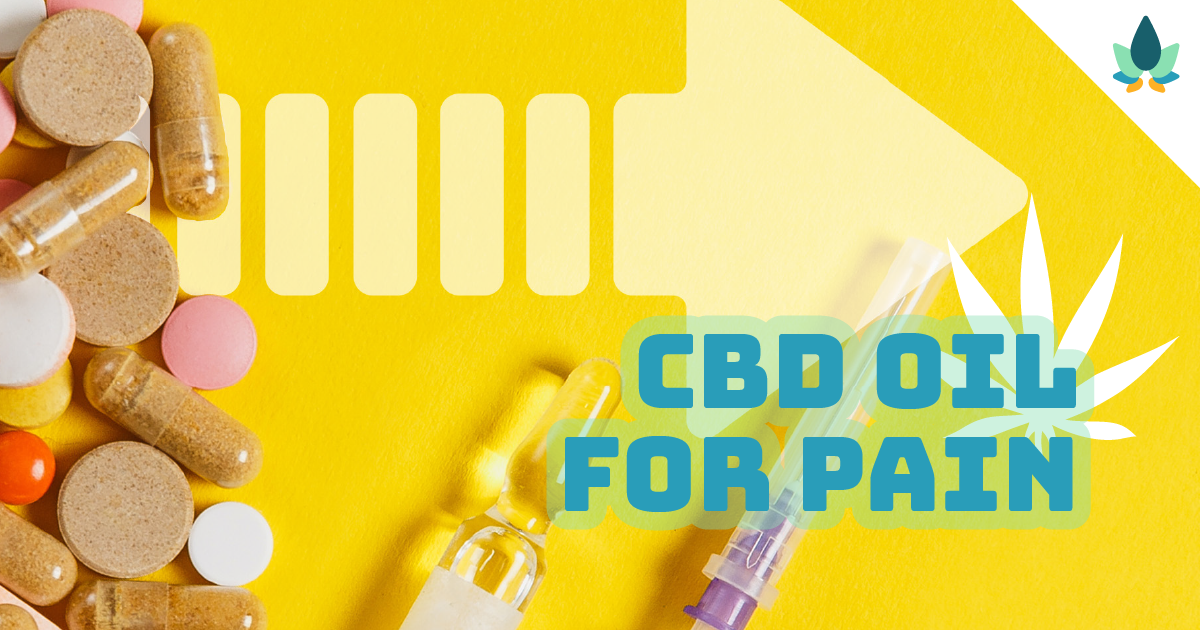
Check out our “CBD Oil for Pain” intro video (2min)
Chronic Pain By The Numbers
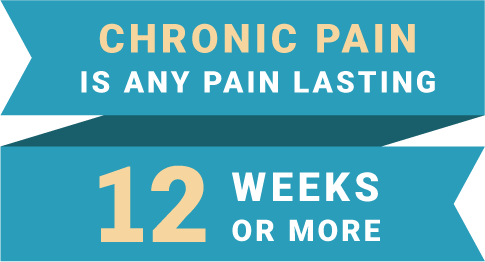
Chronic pain is more than a standard injury, pulled muscle, or nagging headache. By definition and various diagnosis criteria, pain reaches the “chronic” level when it has lasted continuously for 12 weeks or more. Instead of standard pain signals that let us know there’s an injury, chronic pain is persistent and relief is difficult to come by. (1)
It can be caused by an injury or underlying illness or it’s cause may be difficult to impossible to identify.
Unfortunately, chronic pain doesn’t stand alone. It’s often accompanied by:
- Fatigue
- Restlessness
- Inability to sleep
- Decreased appetite
- Obvious mood swings and changes
- Limited movement
- Reduced strength
- Depression
- Anxiety
- And more

Physicians are often hesitant to diagnose chronic pain until all other treatable causes have been ruled out. Because of this, a diagnosis and the development of a formal treatment plan can take months or even years.
Obtaining the diagnosis can also be expensive. Many times, extensive tests are needed to rule out all possible “definitive” answers, including MRI, CT scans, blood tests and more. Each of these comes with a cost — including the actual cost of the test, time out of work, and more. The burden of diagnosing chronic pain disorders is great.
During the waiting period, physicians may offer various treatment options and pain management medications, ranging from injections to opioids and more; which we will cover shortly. This is especially frustrating for the individual experiencing pain and their loved ones — especially when something simple, like recommending the patient use CBD oil, could solve the problem or at least provide relief. Because this is not an FDA approved option, yet, this isn’t an option (keyword focus here: yet.)
Today, chronic pain affects more than 100 million Americans; that’s more than diabetes, heart conditions, and cancer combined. It is far from rare and the need for a cure and the need for relief have never been more urgent.
For a deeper look, check out the charts below:
The Cost of Chronic Pain

The total annual incremental cost of health care stemming from pain ranges from $560 billion to $635 billion in the US. This includes medical costs, lost wages and lost productivity in the workplace.
OF AMERICAN ADULTS SUFFER FROM A LACK OF SLEEP A FEW NIGHTS A WEEK OR MORE DUE TO CHRONIC PAIN
INDIVIDUALS SUFFERING FROM PAIN — SUCH AS BACK PAIN — ARE OFTEN FOUND TO BE IN WORSE PHYSICAL SHAPE AND MENTAL HEALTH THAN THOSE WHO DO NOT
THE MOST COMMONLY REPORTED TYPES OF CHRONIC PAIN INCLUDE:


2 MILLION AMERICANS SUFFER FROM A SUBSTANCE DISORDER INVOLVING, PRESCRIPTION PAINKILLERS EACH YEAR

The Alternative You've Been Waiting For: Miracle Relief?
If traditional medications and narcotics fall short for chronic pain relief, what are sufferers to do?
Here’s where the benefits of CBD oil not only enter the picture but steal the show.
Emerging studies have begun to demonstrate the power of CBD to relieve pain — even moderate to severe pain.
An exciting advance in 2011 (in the form of clinical trials) demonstrated the effectiveness of non-intoxicating cannabinoid compounds like CBD in interacting directly with neural pathways that control pain, offering a promising alternative course of treatment for patients looking for a non-narcotic treatment plan or for patients for whom traditional treatments have fallen short. (5)
The next year, researchers found that CBD from organic hemp is effective in controlling inflammation and pain (which often stem from issues with the immune system) without creating an analgesic tolerance that could lead to difficulty and/or withdrawal symptoms at the completion of treatment. (6)
Some studies test the use of CBD for specific conditions like multiple sclerosis (MS). For instance, researchers in 2007 completed a double-blind, placebo-controlled study which concluded that CBD can help treat neuropathic pain that most patients label “debilitating,” and another study the same year delivered similar results in a CBD-based drug trial for patients with MS. A study that took place in 2014 concluded that CBD is, in fact, effective for therapeutic neuropathic pain relief. (7)
These are just a few of the many studies that have been completed and are pointing patients toward something promising, something better. The positive effects of CBD are truly stunning, and we’re just starting to uncover the potential for more. Who knew something as simple as a plant compound could offer so much.
How Does CBD Reduce Pain?
As additional cannabinoid receptors were uncovered, the full endocannabinoid system in human bodies, one designed to interact with and parallel other systems in the body that control pain, came to light.
When the endocannabinoid system is able to function properly, the body is more likely to respond well to pain, even when traditional treatments fall short.
The endocannabinoid system contains various receptors (mainly CB1 and CB2 receptors) that react to cannabinoids, releasing enzymes throughout the central nervous system, brain and rest of the body, that promote balance, reduce the effects of harmful chemicals that build up in the body, reduce inflammation — a major player in chronic pain, arthritis pain — and more.
That’s why for some time now, medical cannabis has been a top option for treating chronic pain. The body is designed to respond to this natural substance, eliminating negative stressors throughout it.
In other words, full-spectrum CBD — along with other cannabinoids — work, even when other drugs, morphine included, fall short, because our bodies have a system that is designed to use them to their fullest extent.





What Is CBD?
So… what is CBD oil? Why is it effective at treating pain? Why should patients in need of relief try something that — let’s face it — sounds a little more “alternative” than they may be accustomed to?

Read on.
CBD, or, cannabidiol, is derived from the cannabis plant, which is why red flags generally start to go up when it enters a conversation, especially a medical conversation. But, before judging, becoming concerned or writing it off, a little education may be helpful.
The cannabis plant contains over 400 natural compounds, many of which are similar to other organic materials and plants. 60 of these compounds are unique to the cannabis plant; these are called cannabinoids. Cannabidiol is an active compound, or cannabinoid, found only in the cannabis plant.
It. Is. Not. Medical. Marijuana. It is not traditional marijuana either.
The difference, the “what it is not,” matters greatly.
When people — perhaps yourself included — think about marijuana or medical marijuana, you likely think about the side effects. While medical marijuana has a place and has shown promising results and relief for sufferers of a variety of disorders, it is possible to gain many of the same benefits without those effects.
Here’s why:
CBD is just one of over 40 cannabinoids found in the marijuana plant. While it provides many medical benefits, like those mentioned above, it often works with and is derived from the plant with another cannabinoid, THC or tetrahydrocannabinol. THC is the compound responsible for the psychoactive effects traditionally associated with marijuana usage.
THC and CBD can be derived from the cannabis plant in isolation, however, which means patients can reap many of the same health benefits without side effects that can be viewed as negative by users and bystanders.
It’s important to note, however, that something called the entourage effect also exists. This is when users experience heightened relief from multiple cannabinoids at once. Using a product that contains both CBD and THC, along with other cannabinoids, may lessen the undesirable effects of one while boosting the positive benefits of the other. It takes time to find the right combination to fight chronic pain since each case is different, but, some users report relief from using products that contain both THC and CBD.
The alternatives fall short... WITH DEADLY CONSEQUENCES
There are two major problems relating to traditional chronic pain treatments (which may have started to become clear based on the information above).
First, chronic pain is different for every sufferer. Back pain, joint pain, and chronic migraines, for example, require different treatment options. Even under “back pain,” skeletal and muscular pain are strikingly different. What may help treat one, may not treat the other. Identifying the cause of pain — which is sometimes impossible — is critical for finding an effective, “traditional” treatment.
Additionally, due to the national opioid epidemic, medical providers are often hesitant to provide narcotics and related medications for long-term pain management. With 116 Americans dying each day due to addiction — see chart below — this makes sense. (8)
The Opioid Epidemic
2016 NCHS Data









While some alternative treatments have been around and advised for centuries, including rest, ice, physical therapy, and relaxation/meditation, they often fail to help the body alleviate pain, leading to the need for medical treatments and therapies.
Standard pain management regimens often include:
- Opioids. As demonstrated by the chart above, the risk associated with these drugs is often not worth the temporary relief they provide.
- NSAIDs and over the counter anti-inflammatory medications, designed to reduce swelling which can cause pain.
- Steroids, specifically corticosteroids, which work to reduce swelling.
- Anticonvulsants, designed to help alleviate neurological pain.
- Antidepressants. In addition to providing relief from certain conditions, antidepressants help produce chemicals that reduce the amount of pain signals that reach the brain, causing physical pain.
While these options may be available, they might not be in your best interest. In addition to the risk of dependence and withdrawal, traditional treatments are often accompanied by serious — sometimes life-threatening — side effects that could include:
- Swelling in multiple areas of the body.
- Dry Mouth.
- Nausea, vomiting and other digestive issues.
- Diarrhea or constipation.
- A slowed metabolism.
- Liver damage.
- Breathing difficulties.
- Disrupted heart rhythms and abnormal heart beats.
How to Determine Your CBD Dosage for Pain Relief
Convinced yet?
If not, that’s okay — be sure to check out the links to the studies listed above to learn more, and to talk to your medical provider about whether CBD may be best for you.
If you are ready to give it a try, finding the regimen and amount of CBD that’s right for your specific needs is mission-critical.
Like traditional pain treatment plans, you may need a daily maintenance schedule, along with an option for when a flare does occur.
For daily maintenance, you have to learn how to take CBD oil. You can select whichever product that feels right to you; a tincture that dissolves under the tongue, oil, capsules or more. Each of these ingested forms of CBD allows the compound to enter your body naturally, though the time before desired relief sets in may vary, and may be longer when ingested in these forms.
Many users report starting with a 5-10 mg CBD dose every day, while others find relief with a standard 25 mg per day regimen. As with other drugs, starting slowly and gradually increasing is often best. If no relief is felt at this level, increase by another 5-10 mg of CBD until relief is felt. Starting at a higher dose the first time is not always necessary or desirable; start with a lower dose until you find your sweet spot. Though, different conditions may require different, or even higher doses.
It’s important to note, that patients looking for pain in a specific area of the body, on the skin or relating to a muscle may want to investigate a topical lotion, rather than CBD in an ingestible form.
What about a flare-up?
No drug can completely eliminate the chance of a pain flare-up, because oftentimes, these flares are caused by external circumstances or variables — the weather, too much activity, heat, stress, or something else.
When this occurs, many sufferers find relief in a vaporized or inhaled version of CBD. This allows for a more instantaneous effect, instead of the delayed onset associated with ingestible forms of CBD, but, the effects are often more short term. Just something to keep in mind.
Another option is relying on a CBD tincture when a pain flare occurs. CBD tinctures (in a variety of CBD oil dosages) can be dropped under the tongue and held for 30 to 60 seconds before swallowing. In this method, CBD begins to take effect in 10-20 minutes, with a heightened effect in 60 minutes. CBD oil tinctures can be flavored in multiple flavors, some more desirable than others. Finding the one that’s right for your needs may take some experimentation. They also come in a variety of strengths.
Other forms of ingesting edibles include CBD capsules, CBD isolate, oil and CBD cannabutter baked into baked goods and more. The options are nearly endless and applicable for a variety of medical conditions and you can vary the serving size for your needs.
Check out a CBD dosage calculator to determine the right dose of CBD to start with for your body weight and other factors. Finding the proper dosage is essential! (9)
Before moving on, something else worth mentioning is this: full-spectrum CBD is likely a better choice than an isolate.
Why?
It comes down to terpenes.
Terpenes are natural compounds that are found in every living plant on earth. Designed to attract various pollinators, they give different strands of cannabis and hemp plants various flavors and effects. During the production process, these terpenes can be lost. When this happens, the entorage effect becomes less possible. High quality, full-spectrum CBD sourced from industrial hemp plants is essential for maximum pain management!
Does CBD Oil Have Side Effects?
Alright… you have a dose in mind and you’re ready to start. But, if traditional pain relief treatment options have so many side effects, CBD has to as well…right?
The answer might surprise you.
CBD oil side effects do exist… But these effects are rarely reported. They include:
- Tiredness.
- Stomach effects including diarrhea.
- Appetite change.
- Weight gain or loss.
The best part? CBD’s effects are not life-threatening, and overdosing is nearly impossible. It is one of the only substances reported to have no serious side effects by the World Health Organization.
When compared with the major — sometimes life-threatening — risks of traditional pain management, it’s clear that full-spectrum CBD oil is an attractive alternative, worth trying.
As a side note, science is catching on. From FDA approved perscription medications (like Epidiolex) to research on other solutions, natural medications and solutions are becoming mainstream.
How To Find The Right CBD For Pain Management
As you read through the information presented above, you may have realized that CBD does have many variables. Some of these are related to the fact that the science around CBD is fairly “new,” all things considered, others relate to the fact that so many options and forms are available for those looking into CBD products.
Because there is still a lot of confusion around the legality of CBD, be careful… targeted research and third-party lab test results are absolutely essential. This is your health we are talking about, after all.
Look into the claims presented by various retailers. Check their reviews, their Better Business Bureau rating and more. Call the company to find out if you are able to talk to a live individual. Ask about the studies that went into creating the product and about where the product is manufactured. If you sense discomfort during the conversation, or in anything you find during your research, move on.
Because the compound is not yet regulated by any federal agencies, careful, targeted research is absolutely essential.
Finding a reputable supplier that puts your needs first and cares about you as a customer is important.
Taking these steps will allow you to move forward with confidence toward what may very well be a better, more pain-free future.
The science is in, the research is underway: CBD may provide a desirable alternative to traditional pain management. Relief could be more possible than ever.
As you dive in, take the time to explore various forms of CBD (and products: gummies, oils via droppers, lotions, vape products, etc), to test what works for you, and to create your own regimen for relieving pain. Traditional pain relief options are not your only choices; side effect free options — like pure CBD — do exist.
Do you have a CBD pain relief story? Any CBD oil products to recommend? We’d love to hear it! Please share with us!



